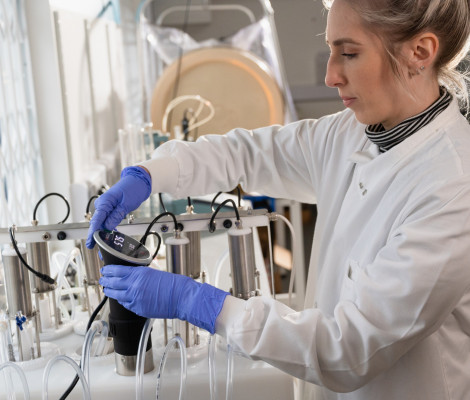
Biogas facilities
Our biogas facilities enable new/potential users of anaerobic digestion (AD) and biohydrogen to characterise their feedstock to establish its suitability for production of high gas yields.

Our microbiology laboratory offers a range of equipment allowing users to safely handle, store and work with a variety of aerobic and anaerobic microbes at ACDP hazard category II level. We also have a number of pieces of sample capture / manipulation / enumeration equipment, such as air samplers, an anaerobic chamber, a stomacher 400 circulator and a Colony Doc-it Imaging Station, which provides measurement of zones of inhibition and radial diffusion assays, enabling rapid quantification of results for antimicrobial activity assays.
Our experienced staff carry out microbiology-based projects covering a range of activities and applications, allowing us to identify, characterise and use a wide range of microbes. We also have a Stomacher 400 Circulator by Seward which is used at the outset of determining the microbial content of environmental samples, food products etc: samples to be tested are homogenised aseptically using the Stomacher, enabling the recovery of microorganisms present deep within the sample as well as those present on the surface. This enables us to obtain more accurate microbial counts since any microbes present are distributed evenly throughout the homogenised sample, avoiding any localised pockets of microbial growth within the sample. Efficient homogenisation of samples is also vital in downstream molecular applications, such as pathogen detection using qPCR or microbial community analysis using genotyping, and next generation sequencing methods.
Our equipment also includes a surface air system (SAS) air sampler which are portable devices used to capture the microorganisms present within an indoor environment. Known volumes of air are drawn through numerous holes present on the lid of the device and deposited onto the surface of an agar plate contained within the equipment. The agar plates can then be removed and incubated to allow the captured microbes to grow for subsequent identification. This equipment is an invaluable tool in determining sources of contamination in the production environment.
Activities include:

Our biogas facilities enable new/potential users of anaerobic digestion (AD) and biohydrogen to characterise their feedstock to establish its suitability for production of high gas yields.
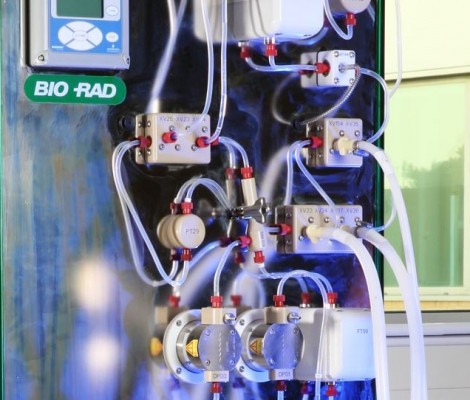
Used for purification and separation of complex organic mixtures.
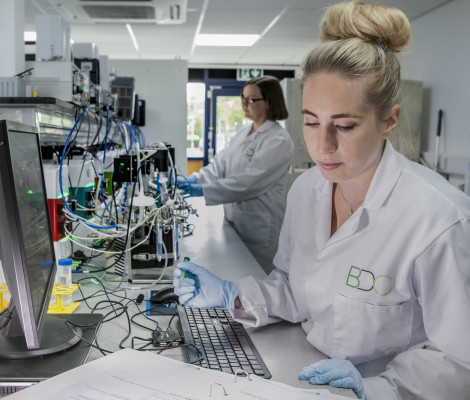
We have several bioreactor systems, which allow the development and scale up of fermentation processes from 500 mL to 30 L.
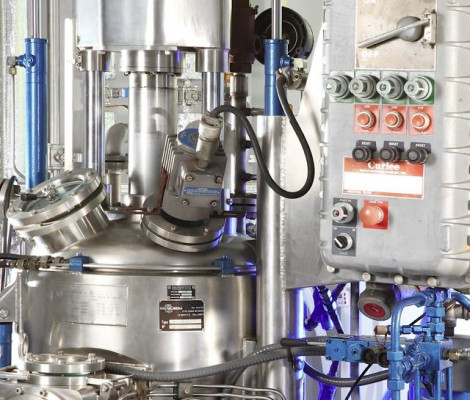
Our Guedu filter drier is used for separating solids and liquids from each other, before drying the products.
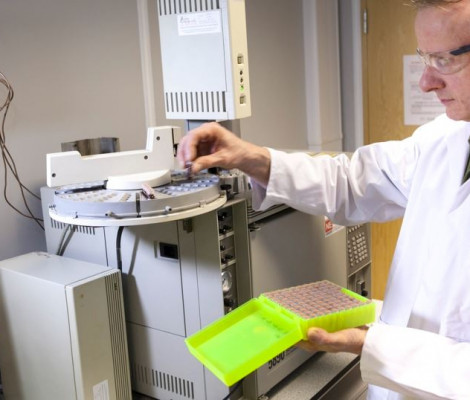
Gas chromatography (GC) is a flexible technique that allows separation and quantification of chemical substances found within a complex mixture.
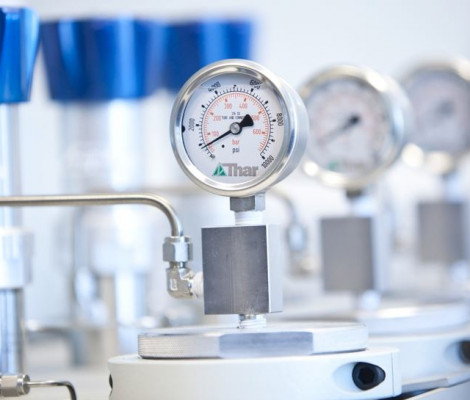
The Buchi Kilo Suite (ATEX Rated 65 L vessel) pilot scale glass reactor suite has a 65 L capacity, capable of operating under various modes including reaction, distillation, crystallisation and extraction.
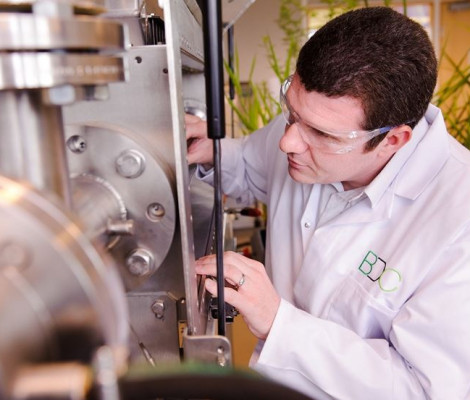
Our pyrolysis microwave allows heating up organic materials in the absence of oxygen (pyrolysis) for a wide range of industrial applications such as energy and chemicals production.
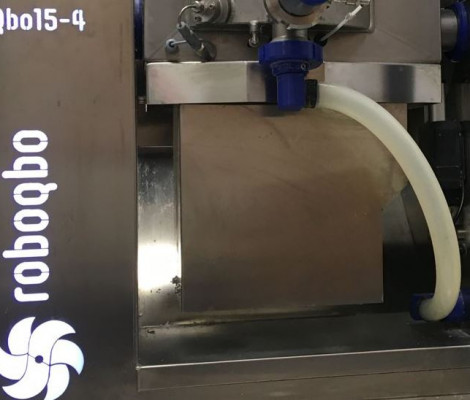
The RoboQbo 15-4 is a Universal Process Machine capable of processing high solid loading slurries upto 30% w/w (dependent on feedstock).
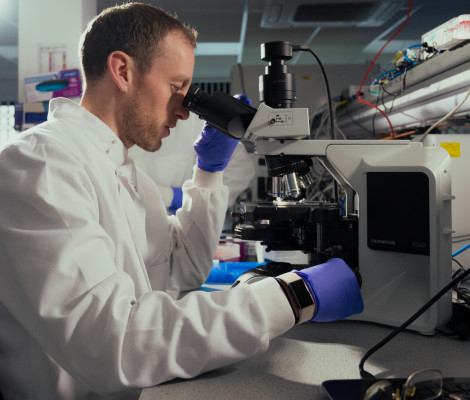
Our microbiology laboratory offers a range of equipment allowing users to safely handle, store and work with a variety of aerobic and anaerobic microbes, at ACDP hazard category II level.
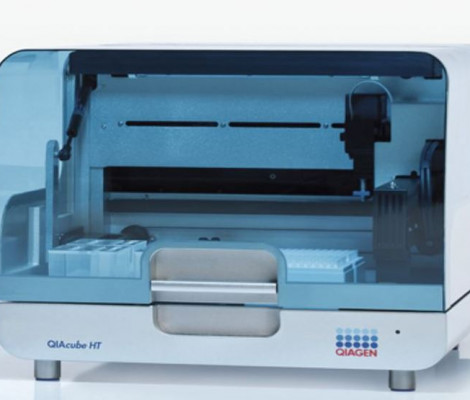
Qiagen QIAcube HT is an instrument for an automated mid- to high-throughput nucleic acid purification in 96-well format using silica membrane technology.

Our supercritical fluid extraction system at can extract chemical compounds from biomass materials.